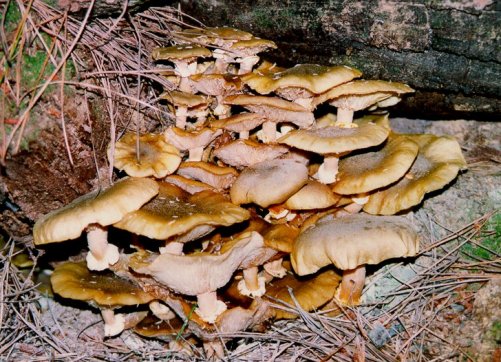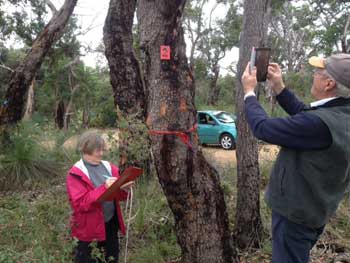Uncontrolled Access
Uncontrolled access in the park can result in soil compaction, destruction of native vegetation, erosion, spread of weeds and dieback and disturbance to wildlife.
By keeping to parking areas, designated walk trails and designated bike trails this threat can be minimised.
Cankers
Cankers and other disease could be introduced into the park via infected brush material or seedlings for revegetation.
Aerial cankers also pose a risk to vegetation in the park. It has been identified as a major threat to the Eucalyptus phylacis (Meelup mallee) population in the park in which stem death is evident.
Marri (Corymbia calophylla) cankers are caused by a fungal infection and are a major threat to Marri trees in the park.
In 2014 Marri decline treatment trials were carried out to establish the effectiveness of phosphite and medical nutrient implants to boost the health of infected trees. This was a joint project between the Cape to Cape Catchment group and the Centre for Excellence for Climate Change, Woodland and Forest Health.
Meelup Volunteers monitoring Marri trees in the park
Armillaria luteobubalina
Armillaria spreads through root to root contact with infected trees, especially old decayed stumps and roots.
 Approximately sixteen percent of the park is infected with the fungus Armillaria luteobubalina. It is a species common to woody forests and can infect many woody plant species. This fungus becomes a serious killer in disturbed habitats, where it causes root rot; destroying the food and water transport systems of its host, and then living on the dead plant's tissue for many years. The symptoms of the fungus include the death of branches, yellowing of foliage, poor vigour and the darkening and rotting of the larger roots.
Approximately sixteen percent of the park is infected with the fungus Armillaria luteobubalina. It is a species common to woody forests and can infect many woody plant species. This fungus becomes a serious killer in disturbed habitats, where it causes root rot; destroying the food and water transport systems of its host, and then living on the dead plant's tissue for many years. The symptoms of the fungus include the death of branches, yellowing of foliage, poor vigour and the darkening and rotting of the larger roots.
In natural ecosystems, because it is an endemic species, Armillaria is an integral part of ecosystem functioning and is not detrimental. It is generally only a problem when changes or disturbances occur in that system. In natural (undisturbed or unchanged) ecosystems, attempting to control Armillaria by traditional means would create physical disturbance and may in fact make it worse.
To prevent problems associated with this disease, it is important to limit the introduction of the fungus during rehabilitation of disturbed sites. Materials such as mulch used in rehabilitation should be examined for obvious signs of the fungus

